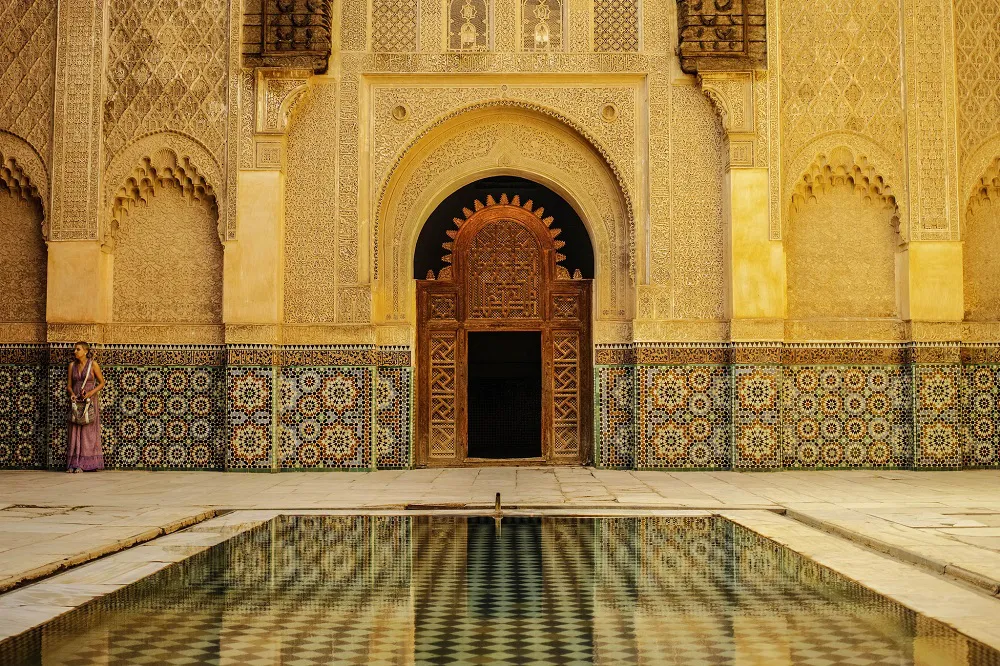
The Rich History of Marrakech: From Ancient Dynasties to Modern Marvels
Exploring the Timeless Majesty of Morocco’s Most Enigmatic City

Marrakech: A Journey Through Time
Marrakech, often referred to as the "Red City" for its distinctive terracotta walls, is a place where history comes alive. From its founding by ancient dynasties to its transformation into a modern cultural hub, Marrakech has been a center of power, trade, and creativity for centuries. Its labyrinthine medinas, grand palaces, and vibrant souks tell the story of a city that has captivated travelers for generations. Let’s explore the rich history that makes Marrakech one of Morocco’s most enigmatic destinations.
1. The Founding of Marrakech
Marrakech was founded in 1062 by Yusuf ibn Tashfin, the leader of the Almoravid dynasty. Strategically located at the crossroads of trade routes, the city quickly became a hub for commerce and culture. The Almoravids built mosques, palaces, and irrigation systems, laying the foundation for Marrakech’s future growth.
- Koutoubia Mosque: Built by the Almohads, it remains one of the city’s most iconic landmarks.
- Qubba Almoravid: A rare surviving example of Almoravid architecture, showcasing intricate carvings and design.
- Irrigation systems: The Almoravids introduced advanced techniques, including the famous khettara underground channels.
2. The Golden Age of the Almohads
Under the Almohad dynasty in the 12th century, Marrakech reached its golden age. The city became a center of learning, art, and architecture, attracting scholars and artisans from across the Islamic world.
- Expansion of the Koutoubia Mosque: The Almohads added the iconic minaret, which became a model for future mosques.
- City walls and gates: The Almohads fortified Marrakech with massive walls and monumental gates, such as Bab Agnaou.
- Cultural flourishing: The dynasty promoted science, philosophy, and the arts, leaving a lasting intellectual legacy.
3. The Saadian Dynasty: A Renaissance of Splendor
In the 16th century, the Saadian dynasty ushered in a period of renewed prosperity for Marrakech. Known for their opulent palaces and tombs, the Saadians left an indelible mark on the city’s architecture and culture.
- Saadian Tombs: A stunning mausoleum complex adorned with intricate carvings and tilework.
- El Badi Palace: Once a lavish palace, its ruins still evoke the grandeur of the Saadian era.
- Ben Youssef Madrasa: A beautifully preserved Islamic school showcasing Saadian craftsmanship.
4. The Alaouite Dynasty: Modernizing Marrakech
The Alaouite dynasty, which still rules Morocco today, has played a key role in shaping modern Marrakech. Under their leadership, the city has preserved its historic charm while embracing modernity.
- Restoration projects: The Alaouites have restored many historic sites, including the Koutoubia Mosque and Saadian Tombs.
- Modern infrastructure: The dynasty has introduced contemporary amenities while respecting the city’s heritage.
- Cultural preservation: Efforts to protect Marrakech’s medina led to its designation as a UNESCO World Heritage Site.
5. The French Protectorate: A New Chapter
During the French protectorate (1912–1956), Marrakech underwent significant changes. The French introduced new architectural styles and urban planning, creating a blend of traditional and modern elements.
- Guéliz district: A modern neighborhood with European-style buildings and wide boulevards.
- Jardin Majorelle: A botanical garden designed by French artist Jacques Majorelle, later restored by Yves Saint Laurent.
- Cultural exchange: The protectorate period brought new influences to Moroccan art, cuisine, and fashion.
6. Marrakech Today: A Cultural Capital
Today, Marrakech is a vibrant city that seamlessly blends its rich history with modern innovation. It’s a hub for art, fashion, and tourism, attracting visitors from around the world.
- Art and culture: The city hosts events like the Marrakech International Film Festival and the Biennale of Contemporary Art.
- Luxury tourism: Marrakech is home to world-class hotels, spas, and restaurants.
- Sustainable initiatives: Efforts to promote eco-tourism and preserve the city’s heritage are gaining momentum.
7. Exploring Marrakech’s Historic Sites
To truly appreciate Marrakech’s history, visit these iconic landmarks:
- Jemaa el-Fnaa: The city’s bustling main square, a UNESCO Masterpiece of Oral and Intangible Heritage.
- Bahia Palace: A 19th-century palace showcasing Moroccan craftsmanship and design.
- Menara Gardens: A tranquil oasis with a historic pavilion and olive groves.
- Medersa Ben Youssef: An ancient Islamic school with stunning architecture and intricate details.
Tips for Exploring Marrakech’s History
To make the most of your historical journey through Marrakech, keep these tips in mind:
- Hire a local guide to gain deeper insights into the city’s history and culture.
- Visit historic sites early in the morning or late in the afternoon to avoid crowds.
- Dress modestly when visiting religious sites like mosques and madrasas.
- Take your time to explore the medina’s hidden gems, from artisan workshops to historic riads.
Final Thoughts
Marrakech is a city where the past and present coexist in perfect harmony. Its rich history, from the Almoravid dynasty to modern times, has shaped its identity as a cultural and architectural treasure. Whether you’re wandering through the ancient medina, marveling at the Saadian Tombs, or relaxing in a contemporary riad, you’re experiencing the timeless majesty of Morocco’s most enigmatic city. So, take a step back in time and let Marrakech’s history unfold before your eyes—it’s a journey you’ll never forget.
